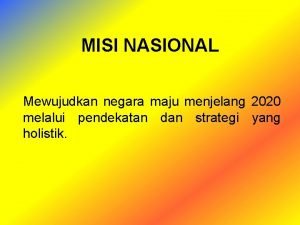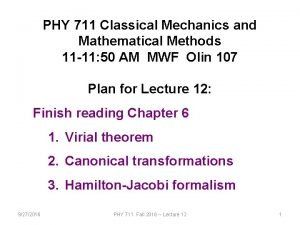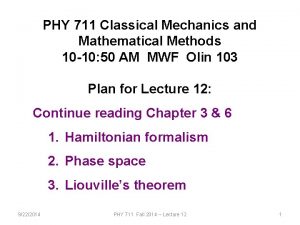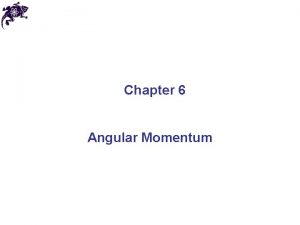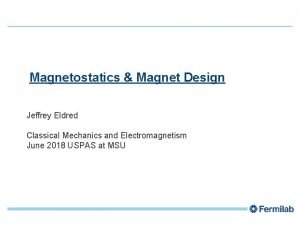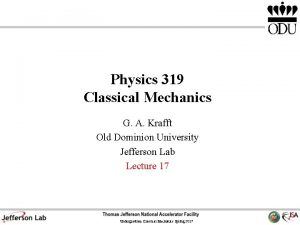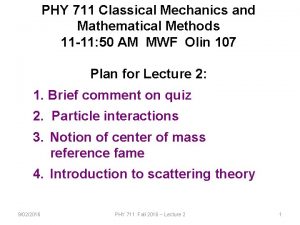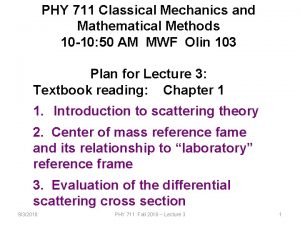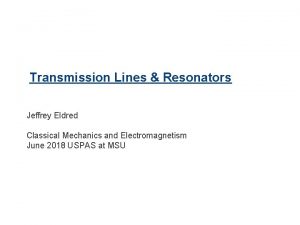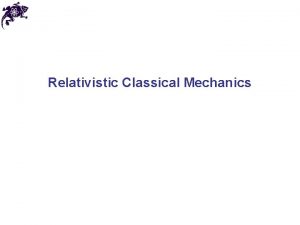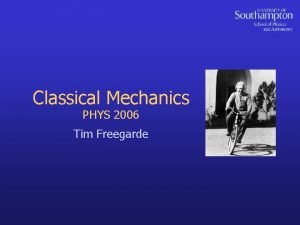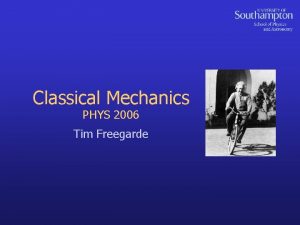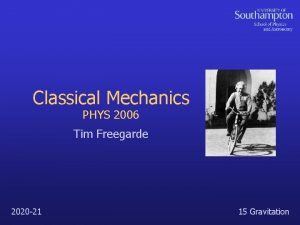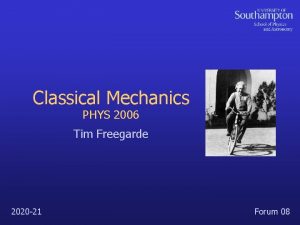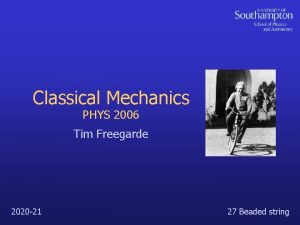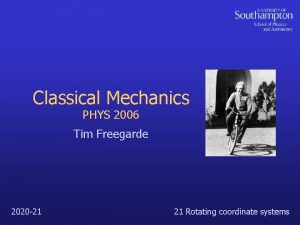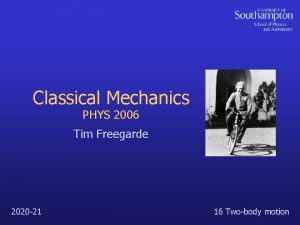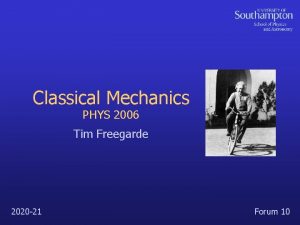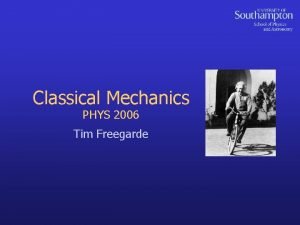Classical Mechanics PHYS 2006 Tim Freegarde 2020 21












- Slides: 12

Classical Mechanics PHYS 2006 Tim Freegarde 2020 -21 29 Lagrangian mechanics

Lagrangian mechanics RECIP E write the system Lagrangian 1. kinetic potential 2. write the Euler-Lagrange equation 3. substitute (1) into (2), treating and as independent variables J-L Lagrange (1736 -1813) 2

Lagrangian mechanics RECIP E write the system Lagrangian 1. • Motion in a non-uniform potential kinetic potential 2. write the Euler-Lagrange equation 3. substitute (1) into (2), treating and as independent variables NEWTON’S 2 ND LAW 3

Lagrangian mechanics RECIP E write the system Lagrangian 1. • 1 -D harmonic oscillator kinetic potential 2. write the Euler-Lagrange equation 3. substitute (1) into (2), treating and as independent variables 4

Lagrangian mechanics: springy pendulum EQUIVALENT TO RESOLVING RADIALLY ALONG SPRING EQUIVALENT TO EQUATING TORQUE ABOUT PIVOT TO RATE OF CHANGE OF ANGULAR MOMENTUM 5

Lagrangian mechanics RECIP E write the system Lagrangian 1. • Springy pendulum kinetic potential 2. write the Euler-Lagrange equations 3. substitute (1) into (2), treating and as independent variables 6

Lagrangian mechanics RECIP E write the system Lagrangian 1. • 3 -D harmonic oscillator kinetic potential 2. write the Euler-Lagrange equation 3. substitute (1) into (2), treating and as independent variables 7

Principle of least action (stationary action) 8

Calculus of variations i. e. a straight line 9

Fermat’s principle of least time S S a P b P 0 x L x • light rays follow the path of least time between two points Pierre de Fermat (1601 -1665) Principle of least action • classical trajectory is path of least action J-L Lagrange (1736 -1813) 10

Path integral in quantum mechanics • all possible contributions to the quantum wavefunction are combined, with phases depending on the action • contributions interfere, favouring those around the path of least variation • the quantum mechanical trajectory is path of least action Richard Feynman (1918 -1988) 11

Classical Mechanics PHYS 2006 Tim Freegarde
 4 teras utama misi nasional 2006 hingga 2020
4 teras utama misi nasional 2006 hingga 2020 Virial theorem in classical mechanics
Virial theorem in classical mechanics Virial theorem in classical mechanics
Virial theorem in classical mechanics Angular momentum in classical mechanics
Angular momentum in classical mechanics Classical mechanics
Classical mechanics Classical mechanics
Classical mechanics Classical mechanics
Classical mechanics Classical mechanics
Classical mechanics Classical mechanics
Classical mechanics Classical mechanics equations
Classical mechanics equations Origin of quantum mechanics
Origin of quantum mechanics Classical mechanics
Classical mechanics Perturbation theory classical mechanics
Perturbation theory classical mechanics
